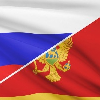Peter the Great and the problem of choosing allies
This is an automatic translation.
Click here to read the publication in the original language.
Peter the Great and the problem of choosing allies
Montenegro in the XVI-XVII centuries. was under the rule of the Brilliant Porta in the Shkodrinsky (Skadar) Sandjak of Northern Albania. At the same time, Montenegro enjoyed the widest autonomy. This was due to the small number and poverty of the country's population, which could not pay the haraj in a timely manner.
There is information that funds collected from all over Montenegro could be equipped with no more than two hundred janissaries, that is, there was no special interest among Turks towards Montenegro. Nevertheless, sometimes, in order to maintain authority among the conquered peoples, the Ottoman Empire sent expeditions to collect haraj even in the poorest areas. Irregular tribute, in fact, was the only sign of Montenegro's dependence on the Port. The anti-Turkish struggle of the Montenegrins was most often expressed in the refusal to pay the Kharaj, which it was difficult to pay for understandable reasons. Because of the same poverty, local tribes sometimes raided the Ottoman possessions, in Herzegovina, Northern Albania, even the Venetians and residents of the Dubrovnik (Ragusian) republic complained about Montenegrins.
Thus, resistance to the Turks was largely determined by the difficult economic conditions of existence in Montenegro. But in the XVIII century. Montenegro's desire for independence began to take shape in a certain concrete political form, which is connected with the activities of the Cetinian metropolitans. The leading role in this struggle was played by Danila Shchepchevich (c. 1670-1735), the first representative of the Petrovich Negoshi family on the metropolitan throne.
Danila was christened and received under his ecclesiastical jurisdiction "God saved by the Diocese of Schenderia", becoming Metropolitan of Cetinje, Schenderi and Primorski in the cathedral of Serbian metropolitans and bishops Danil in 1700 in the Hungarian town of Sechuy, where the patriarch Arsenii III Czarnojević (Montenegrin) was.
In the reign of Danila, the relationship between Montenegrins and their neighbors and with the Turks began to deteriorate rapidly. The metropolitan led the country to independence, which is rarely given without much blood. The Turks in Montenegro had their own "fifth column" - the Poturchentsi, the Montenegrins who converted to Islam. At first the metropolitan turned his wrath against them.
It should be noted that the lord had personal accounts with the nurse. Once, Danila, at the invitation of local Orthodox believers and with the permission of the Shodrin pasha, went to the Serbian village to consecrate the church there. Despite the fact that the village was in the jurisdiction of the church and the presence of an official permit, Danilu was seized by the Poturks and taken to Podgorica in chains. And on the way the Metropolitan himself carried a stake, to which the Turks promised to imprison a priest for rebelling against the Sultan ... Danil was tortured and released only for a ransom of 3,000 ducats.
However, there was also a weighty economic reason for neutralizing the women. Using Porta's support, the Pokurtsi expanded their influence in Montenegro, in particular, they held the largest market, an extremely important economic entity in the region. It was handed over to the impostors by the Soderman governor Suleiman Pasha Bushati after the capture of Cetinje in 1692.
Danila made the final and radical decision "in God's herd to exterminate the infection." The beating, that is, the physical extermination, of the Poturchentsi, began in Cetinje and in Tseklichi, continued in the Crimean, Rietz, and Leshan Nakhii. After 1712 the Poturchentsy no longer played any significant role in the life of Montenegro. Thus, the "fifth column" in Montenegro was destroyed. But this was not enough to fight the Turks.
The thing is that Montenegro was torn apart by internal strife. The tribes that inhabited Montenegro fought each other fiercely, the internecine strife claimed as many lives as Turkish rule, and perhaps more. Danila began to overcome the tribal survivals from the establishment of a single Montenegrin court of 12 elders, but, of course, he could not complete the unification process, it is a long and difficult process for all peoples. Especially in conditions when the Montenegrins resolutely got involved in the war with the Porte and, as they wanted to believe, with the support of Petrine Russia. In Peter's Russia, it seems, perceived the situation exactly the opposite.
In November 1710 the Ottoman Empire declared war on Russia, and, in spite of the fact that Peter I was at war with Sweden and obviously was not inclined to war with Turkey, he nevertheless decided on the infamous Prut march. February 22, 1711 in the Assumption Cathedral of the Kremlin was issued a manifesto on the beginning of the war with the Ottoman Empire and repulse the "predatory wolf of the Turk." It is likely that Peter the First was counting on the support of the Balkan Slavs in general and the Montenegrins, in particular, who could pull out part of the Turkish forces. Especially well looked in this strategic project Montenegro, which deeply pierced the Ottoman possessions.
Peter I appealed to the Balkan Christians with an appeal to help the Russian troops. Tsarist envoys who served in Russia, Colonel Mikhail Miloradovich (Herzegovinian Serb) and Captain Ivan Lukachevich (Montenegrin) went with an appeal on behalf of the Russian Tsar to Montenegro. An inspiring reading and writing was read in the house of Metropolitan Danila, immediately there was a meeting with the participation of the 24 most authoritative Montenegrin elders. Of course, the decision was unanimous: "With the first news of the Russian offensive. Speak against the troops of the Ottoman Empire. " The letter of Peter I was reported to the most remote villages of Montenegro, Brda and Herzegovina.
Montenegrins did not disappoint. In June 1711, they began fighting against the Turks. Miloradovich, appointed by the commander-in-chief, and Metropolitan Danila led the army and successfully fought for some time: the Turks broke up near Gatsko (Herzegovina), together with the inhabitants of Brda and the Herzegovina men, threatened to seize fortified points - Niksic, Spouge, Trebinje, Grahovo, Podgorica.
They fought stubbornly, not having enough funds (Russian money - 3 thousand red! - for unknown reasons did not reach the rebelling Montenegrins). Guns and ammunition was not enough because supplies were controlled by Venice, and it actually blocked the Dalmatian coast. In addition, the Dubrovnik Republic also refused to help Montenegrins.
In the meantime, the 120,000-strong Turkish army at the 70-thousand cavalry of the Crimean Tatars blocked the Russian army near the right bank of the Prut and the great Russian Tsar Peter, as eyewitnesses testified, "ran back and forth across the camp, beat himself in the chest and could not utter a word" . On July 12 (23), 1711, on the Prut River, near the city of Iasi, the great vizier of the Baltagi Mehmed Pasha and Russian diplomats Shafirov and Sheremetev signed the peace, not in favor of Russia.
News of the defeat of Peter I before the Montenegrins came through the Venetians. Believe in this Montenegrins could not, to clarify the situation in Russia was sent to the brother of Mikhail Miloradovich, Gabriel, and they continued to fight. But since they could not take the fortress, they turned to the practice of a small war, hoping that soon a special person would come from Moscow and bring them money.
But money was not brought to Montenegrins, and in April 1712 another peace treaty was concluded between Russia and Turkey, which was also not favorable for Russia. In connection with the reconciliation with the Turks, the practical interest of the Russian Crown towards the Montenegrins was extinguished. But the Montenegrins still did not want to believe in the refusal of Peter I to fight the Turks. But the Turks, as a result of a peace treaty with Russia, received complete freedom of action, which they used, organizing punitive marches against the Montenegrins.
Sultan Ahmed III issued a firman, who was ordered to severely punish the Montenegrins, and Metropolitan Danil and Miloradovich captivated. The Bosnian vizier Ahmed Pasha Shapchaliya, by that time having successfully won on the Prut, headed a huge, on the scale of Montenegro, army of 20 thousand soldiers.
Montenegrins, some of whom fought under the Russian (!) Banners, adequately resisted, the losses of the Turks were impressive, but the forces were unequal and in early August the Turks defeated Cetinje. Miloradovich and Danila barely managed to escape and took shelter in Herzegovina. This time, Ahmed Pasha was satisfied with the issuance of hostages and even amnestied the rebels, including himself Danilo.
Miloradovich soon went to Russia, asking the king not to leave Montenegro, despite the peace with Turkey. Later, a few more Montenegrins went to Russia, in order to understand how to be Montenegrins now, and whether to continue to fight the Turks. It is known that Peter the Great received the Montenegrin delegation in December 1712, possibly in connection with another aggravation of relations with Turkey, in which the Montenegrins could once again pull back some of the wrath of the Illustrious Porte.
But this time the war did not take place, in 1713 Adrianopol Peace was concluded, repeating the provisions of the Prut document as a whole. The delegation had nothing to pass on to compatriots in Montenegro. Miloradovich, by the way, made a remarkable career in Russia. For participation in military operations in Montenegro, he received 500 gold coins and went to serve in Ukraine.
That in the background of peace talks the Turks are preparing for another punitive march in Montenegro, in Russia it was known. Ambassador in Constantinople P. Shafirov wrote to the department about the military preparations of the Turks "against montenegrin" (the so called Montenegrins at the court of the Russian Tsar). Shafirov monotonously explained that the Montenegrins are "disobedient and do not pay any tribute to them" - "they" are Turks. He even knew the name of the leader of the punitive army - Numan-pasha, - even before the beginning of the punitive expedition.
The Bosnian vizier Numan pasha Chuprilich set a simple task for his thugs: "Even a stone on the earth that was conquered must be red with the blood of Montenegrin." He, with three corps of Turks and Albanians, passed through Montenegro with a deadly tornado, devastating the country. Punitive march against Montenegrins lasted from September to early November 1714. Approximately 2 thousand Montenegrins were killed, up to 5 thousand people were driven into slavery. For small Montenegro, it was a disaster.
Metropolitan Daniel took refuge at this time in Boka Kotorska, in the Venetian possessions, and wrote to Peter I: "The most merciful sovereign, the unbeatable king! Look at our bitterness, teach us what to do! And how to get our salvation from our enemies? "And apparently his brother, sincerely believing that Russia will not leave in trouble, he wrote to his brother:" I am Moscow, Moscow, Moscow. I say ... whose I am, the whole earth "...
At the end of 1714 the metropolitan was in Vienna, where he languished for several months in anticipation of permission to travel to Russia. He received an audience with Peter I only in April 1715 and finally submitted a petition to the tsar.
He asked Russia's patronage over Montenegro, taking into account the interests of Montenegro under treaties with Turkey, requested from Peter I a letter of gratitude with words of gratitude to the Montenegrins, compensation for the damage incurred in the war against the Turks, at least in the form of 60 medals from the Russian Tsar, compensation for pecuniary damage Cetinsky monastery, the return of Montenegrin officers to their homeland - if they want, of course. And to return the debts that Miloradovich, in particular, took during the war with the Turks, for various ammunition.
Unbeaten pristolyusteyshy Sovereign deigned in July 1715 to write off a letter of gratitude in which he thanked the Montenegrins and other participants in the battles with the Ottomans. Referring to the high costs of the war with the "heretic king of Sweden," Peter complained that he could not repay for his support, but gave medals with his portrait even more than they asked, well, 10 thousand rubles for different needs, which the ruined Montenegrins there were many. Peter I did not forget to urge the Montenegrins, and indeed all the southern Slavs, to maintain peaceful relations with the Turks and, just in case, promised, if anything, again to call the Balkan brothers to war with the Turks ... He knew that they would not refuse.
At the tsar's money, the Metropolitan bought out the prisoners, partially repaid debts, but the funds were not enough even for the restoration of the churches. However, the Cetinsky monastery was awarded special honors, the Russian tsar granted him regular subsidies - 500 rubles every two years ... Metropolitan Daniel was loyal to the Russian crown for the rest of his life.
Evgeny Novozhilov
#EvgenyNovozhilov
This is an automatic translation.
Click here to read the publication in the original language.






































